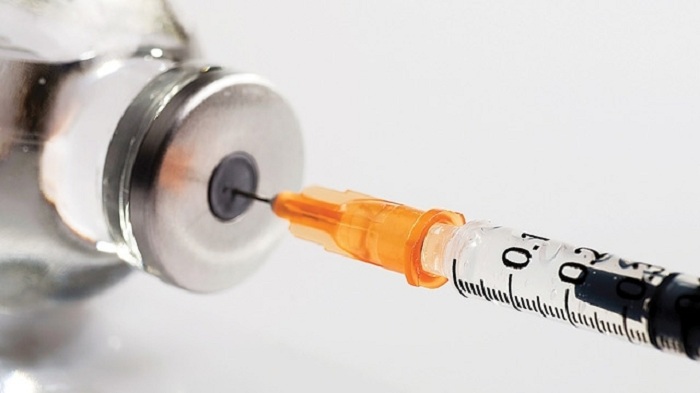While drugs have been designed using computers before, this vaccine went one step further being independently created by an AI program called SAM (Search Algorithm for Ligands).
Flinders University Professor Nikolai Petrovsky who led the development told Business Insider Australia its name is derived from what it was tasked to do: search the universe for all conceivable compounds to find a good human drug (also called a ligand).
"We had to teach the AI program on a set of compounds that are known to activate the human immune system, and a set of compounds that don't work. The job of the AI was then to work out for itself what distinguished a drug that worked from one that doesn't," Petrovsky said, who is also the Research Director of Australian biotechnology company Vaxine.
"We then developed another program, called the synthetic chemist which generated trillions of different chemical compounds that we then fed to SAM so that it could sift through all of these to find candidates that it thought might be good human immune drugs."
The team then took the top candidates SAM identified, synthesised them in a lab and tested them on human blood cells to see if they would work.
"This confirmed that SAM not only had the ability to identify good drugs but in fact had come up with better human immune drugs than currently exist," Nikolai said.
"So we then took these drugs created by SAM into development with animal testing to confirm their ability to boost influenza vaccine effectiveness."
Petrovsky said this potentially shortens the normal drug discovery and development process by decades and saves hundreds of millions of dollars.
The research received funding from the US National Institute of Allergy and Infectious Diseases – part of the country's National Institutes of Health (NIH) – and has begun 12-month clinical trials across the US.
"We already know from animal testing that the vaccine is highly protective against flu, outperforming the existing vaccines. Now we just need to confirm this in humans," Petrovsky said.
The new vaccine comes at the same time as a high number of influenza-related cases in Australia. Before June 2019, 228 people had died from flu related complications, including 57 people in New South Wales and 48 people in Victoria.
Associate Professor Dimitar Sajkov highlighted the need for a better flu vaccine after a number of influenza sufferers this year had already received the 2019 flu vaccine.
"It is tremendous to see such a promising vaccine that we developed with the very first human trials being done at Flinders, progressing onto the world stage," he said in a statement.
"So far in 2019 there have been over 96 thousand confirmed cases across Australia. The number in WA nearly doubled to 10 thousand, as did the number of deaths, there have been 57 deaths recorded in NSW, 44 in SA, and nearly 40 in Queensland."
Petrovsky hopes this vaccine will prove to be more effective than the existing vaccines and will go on to complement or replace them as the standard seasonal flu shot.
"If this is the case then the same technology we are using for flu vaccines can be applied to improve or develop many other vaccines," he added
It's not the first time that Flinders University has had a breakthrough in the vaccine department. In 2009, the team was the first to develop a swine flu vaccine.
Where's the money?
Despite the groundbreaking work the Flinders University team completed, Petrovsky said it's challenging to receive funding for new vaccines in Australia.
"Australia has a great record at publishing basic medical science and has a poor track record of developing new drugs or treatments," he said.
"(But) funding bodies in Australia like NHMRC (The National Health and Medical Research Council) direct the vast majority of their funding to the "big end of town", i.e. the large research institutes.
This makes it very difficult for researchers based outside the large institutes or the biggest universities to compete and get research funding. It is particularly difficult for hospital-based researchers like ourselves to get any traction in this system, despite the fact that past Nobel prizes including Barry Marshall's came out of hospital-based research."
Such a situation means local researchers are often forced to go overseas.
"As an act of desperation, I took a grant application rejected by NHMRC and submitted it to the US NIH (National Institute of Health) as a last-ditch attempt to save my career in research. Much to my surprise and joy, the original US grant application was successful, allowing my research to survive."
Petrovsky has since received more than 10 NIH grants and supplements totalling more than US$50 million. He said that even by US standards, it was an "extraordinary outcome".
"I think this is because the US system values ambitious, innovative and futuristic research whereas Australian funding bodies are highly conservative and only fund me-too incremental research where the outcome is largely already known," he said.
An NHMRC spokesperson told Business Insider Australia in an email: "Funding applications for health and medical research projects are subject to rigorous, expert peer review against published criteria, to ensure transparency, probity and fairness.
"Therefore only applications – including applications for the development of flu vaccines – of the highest quality are funded by NHMRC."
More about: #Vaccine
















































